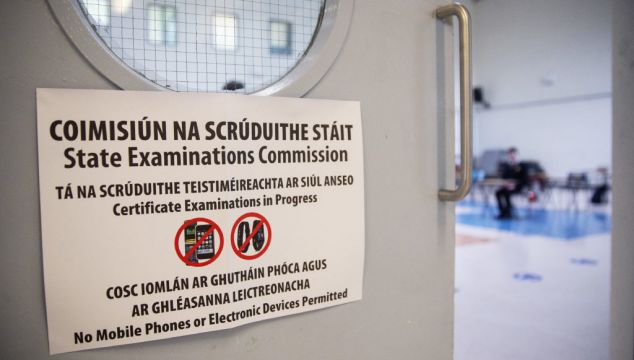The June Bank Holiday is synonymous with the Leaving Certificate and this year sees the exams get (pretty much) back to normal.
After two years of changes due to the Covid-19 pandemic, the class of 2022 will have a largely similar experience to pre-pandemic leaving certs, with just a few notable differences.
Here's everything you need to know about this year's Leaving Cert...
Are we back to the normal exam structure?
Largely, yes.
As always, the Leaving Cert kicks off on the Wednesday following the June bank holiday, which this year is Wednesday, June 8th.
Following the traditional schedule, English Paper 1 is up first on Wednesday morning, with Paper 2 being sat on Thursday afternoon.
Similarly, the two Maths papers for Higher and Ordinary Level students will be sat across Friday, June 10th and Monday, June 13th, while the Irish papers are spread across Monday and Tuesday, June 13th-14th.
As part of a number of accommodations announced for this year's Leaving Cert, students will have an extra 20 minutes added the normal exam length for all English, Irish, Geography and History papers.
A number of the papers have also been adjusted from their traditional structure to give students more choice, while the prescribed materials in some subjects were also reduced in recognition of the classroom time students missed on account of the pandemic.
This year also sees the introduction of new curricular subjects; Polish, Lithuanian, Portuguese and Mandarin Chinese. The examinations for these subjects will be held on Monday, June 20th, alongside the non-curricular languages.
The last exam on this year's schedule is Physical Education (Higher and Ordinary level) on the afternoon of Tuesday, June 28th.
The date on which this year's Leaving Cert results will be released has not yet been announced.
What about resits?
This is the biggest change regarding this year's exams compared to pre-pandemic years.
Given Covid is still with us, the Department of Education decided to offer the possibility for certain students to sit an examination at a later date.
This option will only be available to students who meet the criteria, including those who miss the original exam due to having Covid-19 or "certain other categories of serious illness", or those who experience a "close family bereavement".
In February, Minister for Education Norma Foley said these additional sittings will take place "shortly following the main set of examinations".
Are calculated grades still being used?
No - it's goodbye calculated grades.
The system meant students received a grade from their subject teacher, who estimated the result they thought the student would achieve in the exam based on their performance in school.
In 2020, all Leaving Cert students received calculated grades due to the closure of schools at the outset of the pandemic, while the class of 2021 were given the option to either sit the traditional exams or take the estimate.
While the system ensured two years of students received Leaving Cert results despite huge Covid disruptions, it also led to massive grade inflation which had a knock-on effect on CAO points - more on that later...
So why are people worrying about the results being delayed?
Before the pandemic, the Leaving Cert ran on a tight schedule that nestled into the period between secondary schools closing for the summer holidays and third-level institutes starting the new academic year in September.
The results each year were released in mid-August, followed a few days later by the CAO round one offers, which students had to accept or decline by the deadline a week later.
This gave students a window of time to make arrangements, such as accommodation, before First Year orientation (generally at the start of September), particularly students who ended up accepting an offer in a college they weren't expecting.
This year, there are fears the additional sittings of the exams could put this timeline in jeopardy.
The later sitting will impact not just the length of time it takes to mark all the scripts, but also the subsequent steps that the papers go through, such as standardisation and checks by the chief examiner.
Ultimately, if the results are delayed, the CAO could be delayed and students will have to wait to find out where they're heading off to college, impacting orientation schedules and possibly the starting date of classes for first years.
How are they going to deal with the grade inflation?
After students due to sit the Leaving Cert this year raised concerns that they would be at a disadvantage if they had to compete for third-level places against their 2020 and 2021 counterparts, Ms Foley asked the State Examinations Commission (SEC) "to put in place measures to ensure that the overall set of results in the aggregate for this year will be no lower than last year".
This means the grades achieved last year, which were higher than normal due to students being able to opt for calculated grades, will be at least matched this year on a national level.
How these grade adjustments will be applied is not yet clear, nor is the impact it may or may not have on CAO points.







